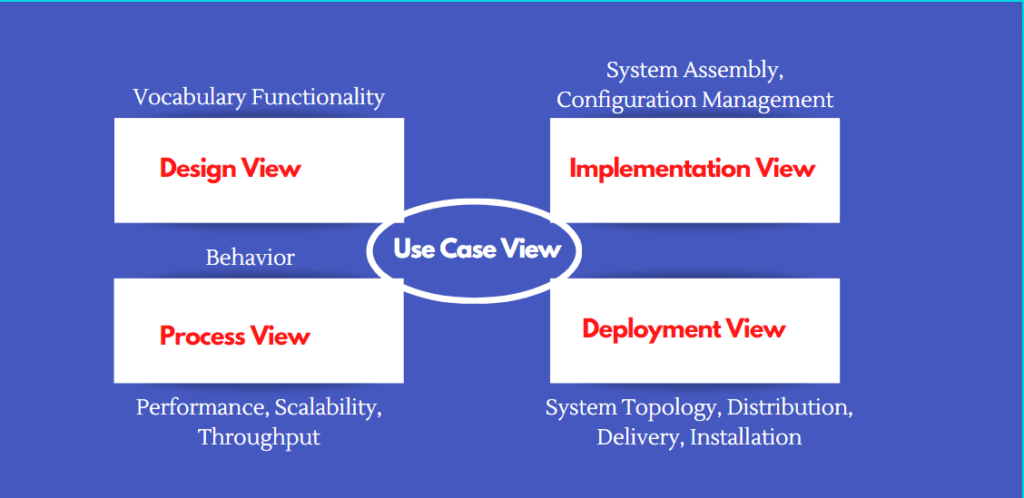In this Post, we are going to discuss about the “UML – Architecture”. So, before going into this topic. First understand some basics about UML:
What is UML and its diagram types?
Curious to know more about UML? If yes, then explore these topics too:
Let’s dive into our topic – UML Architecture
The real world system is utilized by various clients. The clients can be designers analyzers financial specialists, investigators, and some more.
Subsequently, prior to planning a framework, the architecture is made with different perspectives keeping in mind. The main part is to picture the framework from the viewpoint of various viewers.
The better we understand the better we built the system.
UML assumes a significant part in characterizing alternate points of view of a framework.
So, there are 4 different perspectives as:
- Design
- Implementation
- Process
- Deployment
So, keeping all these things in mind you should go for the UML architecture design.

Now, let’s discuss these one by one to clear all the concepts.
Use Case View
- Use case view connects all the four views.
- It explains the functionality of the system.
- It also tells the requirements of the system.
Design View
- This view shows how the functionality is designed inside the system.
- It describe classes interfaces and collaborations that form the vocabulary and then support functional requirements.
- With UML, it addresses the static parts of this view in class and object diagrams, while its dynamic perspectives are captured in interaction diagrams, state chart diagrams, and activity diagrams.
Process View
- It defines the flow of the system.
- Its static and dynamic aspects are expressed the same way as the design view.
- It consolidates the threads and processes that make simultaneous framework and synchronized mechanisms.
Implementation View
- It describes the components and files that are used to assemble.
- It primarily, addresses the configuration management of the system releases.
- It’s Static aspects are captured in component diagram and the dynamic aspects are captured in the interactions textured and activity diagrams.
Deployment View
- It contains the physical node, which forms the system hardware topology on which the system will execute.
- It’s static aspects are captured in deployment diagrams and dynamic aspects are captured in the interaction charts and activity diagrams.
For frontend projects, check and implements these beginner’s friendly projects :- TOP 7 PROJECTS FOR BEGINNERS TO PRACTICE HTML & CSS SKILLS
Want backlinks to your website? Follow this article and get to know in very easy way. How You Can Create High Quality Backlinks In 2021?
Learn about 404 ERROR page – EVERYTHING YOU NEED TO KNOW ABOUT 404 ERROR PAGE FOR SEO
Do practice of C++ programming :- Multiple choice questions on CPP programming
Do practice of C programming :- Multiple choice questions on C programming
In case, you find any typographical, grammatical or any other error in our site then kindly inform us. Don’t forget to provide the appropriate URL along with error description.
Thanks in advance.

